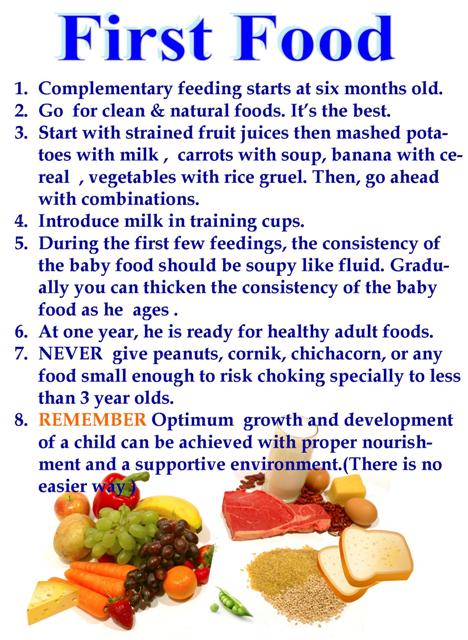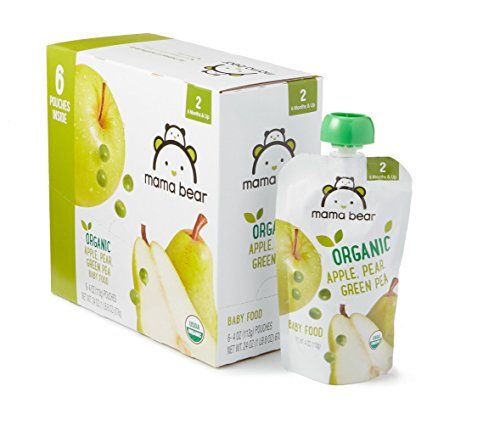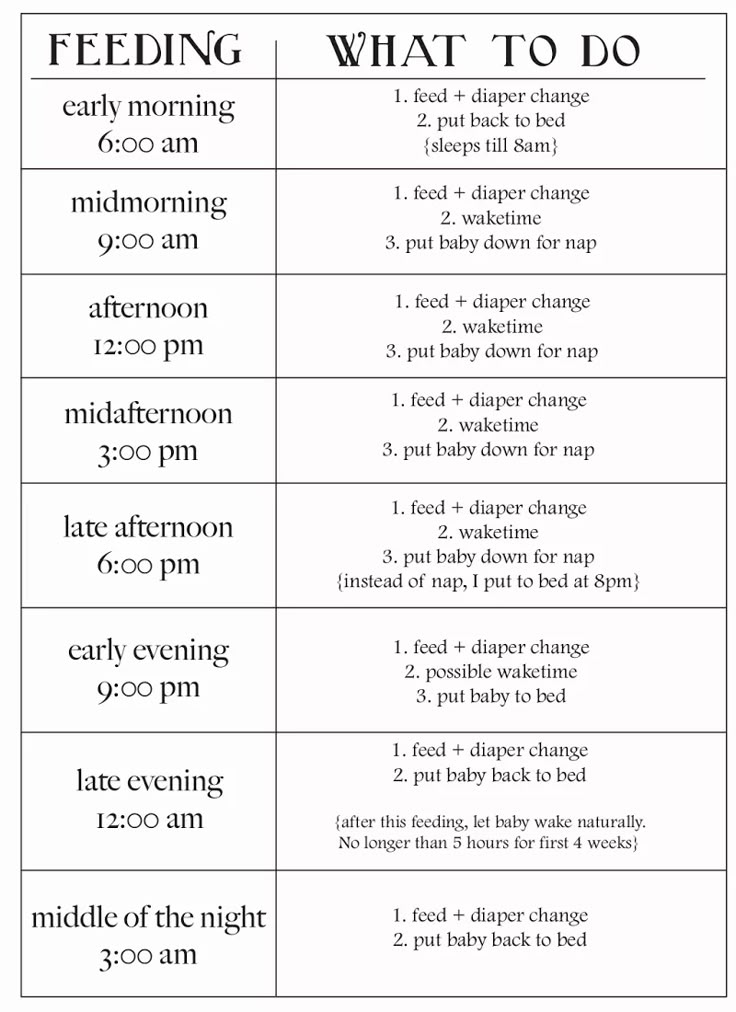Tube feeding a baby goat
Tube Feeding Neonatal Small Ruminants: An Essential Skill for Sheep and Goat Farmers | Whatcom Ag Monthly
Volume 5 Issue 4
Susan Kerr, WSU NW Regional Livestock and Dairy Extension Specialist
Introduction
Lambing and kidding are well under way. It is essential that sheep and goat producers learn how to tube feed young animals. This simple procedure can often save a young animal’s life, thereby increasing lambing and kidding crop rates and enhancing profitability. With a brief amount of instruction and a little practice, even children can perform this crucial task quickly, safely and effectively.
Indications
When is tube feeding necessary? If an animal is too weak or otherwise unable to nurse, it needs to be tube fed. Other situations include maternal factors (lack of milk production, lack of mothering, mastitis, death) and management decisions to control various diseases (C.A.E., O.P.P., Johne’s disease, etc. ). If the lamb or kid will drink from a bottle, this is always preferable to tube feeding.
Importance of Colostrum
Colostrum is the first milk of a mother’s lactation period. It is produced by the udder in the last weeks of pregnancy and lasts for a few days after delivery, decreasing in quality as the mother’s milk comes in. It is usually thicker and more yellow than milk. It contains high levels of fat, protein, vitamins and special proteins called antibodies. These antibodies are produced by the dam’s immune system to protect her against various diseases such as tetanus, enterotoxemia, E. coli and other diseases she was vaccinated against or experienced naturally in her life. Giving dams a booster vaccination three to four weeks before kidding or lambing helps ensure high levels of antibodies in colostrum.
Newborn animals must ingest colostrum within a few hours of birth. A newborn’s intestinal tract is not very selective in the first hours of life; antibodies can be absorbed whole, which is essential for their function. After 12 hours of age or so, antibodies and other proteins are digested into amino acids and then absorbed; they can be used as a source of nutrition but no longer have any systemic disease-fighting ability. The 12-hour time limit should be considered an absolute maximum—producers should strive to ensure adequate colostral intake as soon as possible after birth.
After 12 hours of age or so, antibodies and other proteins are digested into amino acids and then absorbed; they can be used as a source of nutrition but no longer have any systemic disease-fighting ability. The 12-hour time limit should be considered an absolute maximum—producers should strive to ensure adequate colostral intake as soon as possible after birth.
Sources of colostrum in decreasing preference include the neonate’s own dam, another dam of the same species and disease status in the herd, frozen colostrum from the same herd, and commercial colostrum replacer. Commercial colostrum supplements are available to boost the quality of poor quality colostrum. Each year, producers should harvest surplus early colostrum from high-producing animals and freeze it in case of emergency; update frozen colostrum reserves every year. Freezing colostrum in two-ounce portions simplifies future use and reduces waste.
Laboratory tests can confirm the quality of a sample of colostrum by measuring its antibody concentration.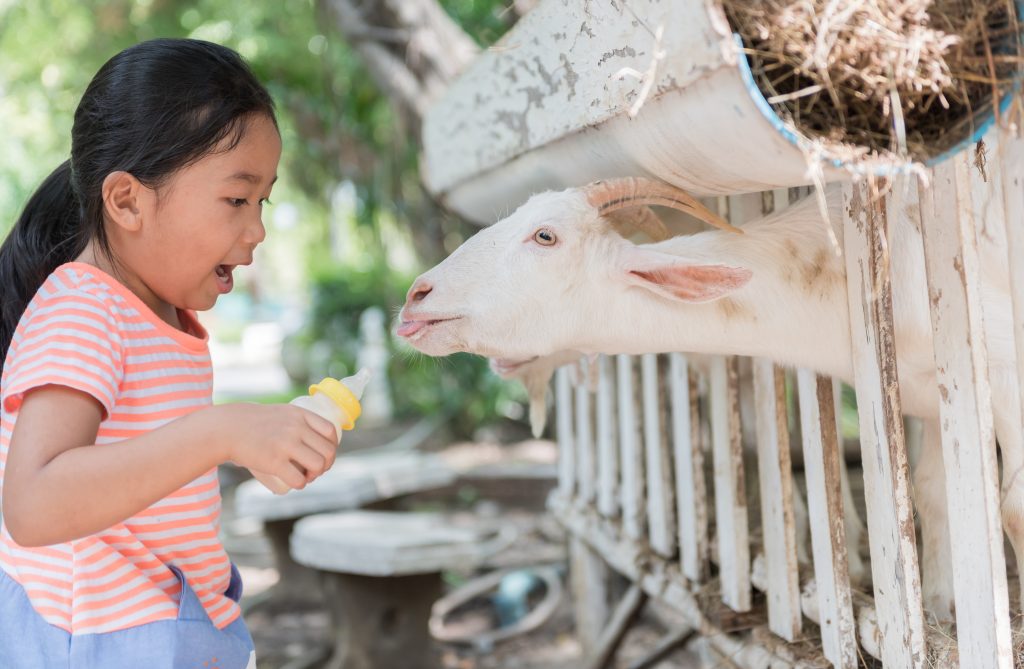 Blood tests in neonates over 24 hours old can confirm whether or not they have absorbed sufficient levels of antibodies. The lack of a protective level of circulating antibodies is called failure of passive transfer (FPT). FPT makes a young animal very susceptible to disease; many animals with FPT die of scours or pneumonia within two weeks of birth. After the first 12 to 24 hours of life, the gut is “closed” and can no longer absorb intact antibodies, so the only treatment for FPT is a costly intravenous transfusion of plasma antibodies.
Blood tests in neonates over 24 hours old can confirm whether or not they have absorbed sufficient levels of antibodies. The lack of a protective level of circulating antibodies is called failure of passive transfer (FPT). FPT makes a young animal very susceptible to disease; many animals with FPT die of scours or pneumonia within two weeks of birth. After the first 12 to 24 hours of life, the gut is “closed” and can no longer absorb intact antibodies, so the only treatment for FPT is a costly intravenous transfusion of plasma antibodies.
Anatomy
The diagrams below depict a simplified cross section of an animal’s head. The “Swallowing” diagram shows the structures of the throat area during swallowing and the “Breathing” diagram shows the same structures during breathing. During swallowing, food and liquids are funneled down the esophagus instead of into the airway by the automatic function of protective flaps of tissue.
Tube Feeding Baby Goats - Backyard Goats
By Cheryl K. Smith, Oregon
Smith, Oregon
Feeding baby goats with a tube can save weak or premature kids. Learn how to properly insert the tube, avoid inundating the lungs, to get precious colostrum into their tummies during a critical moment.
Buttercup, a 3-year-old Oberian doe, unexpectedly went into labor before the goat gestation calendar indicated she should. Upon checking breeding dates, I discovered that my farm partner and I had different dates. She was at either 140 or 145 days gestation. That would make the kids either premature or just on the cusp of maturity. Still, it didn’t occur to me that there might be a problem with the babies.
The labor was normal and uneventful, and around 10 p.m., Buttercup delivered a little doeling then a buckling and then a stillborn doeling. The problems began with the first kid, who was in respiratory distress and having trouble getting a breath. Her tongue was hanging out and, despite stimulation by both Buttercup and me, she was very weak. Her brother followed suit, and despite swinging and removing mucus with a bulb syringe, neither of the living kid goats could stand up.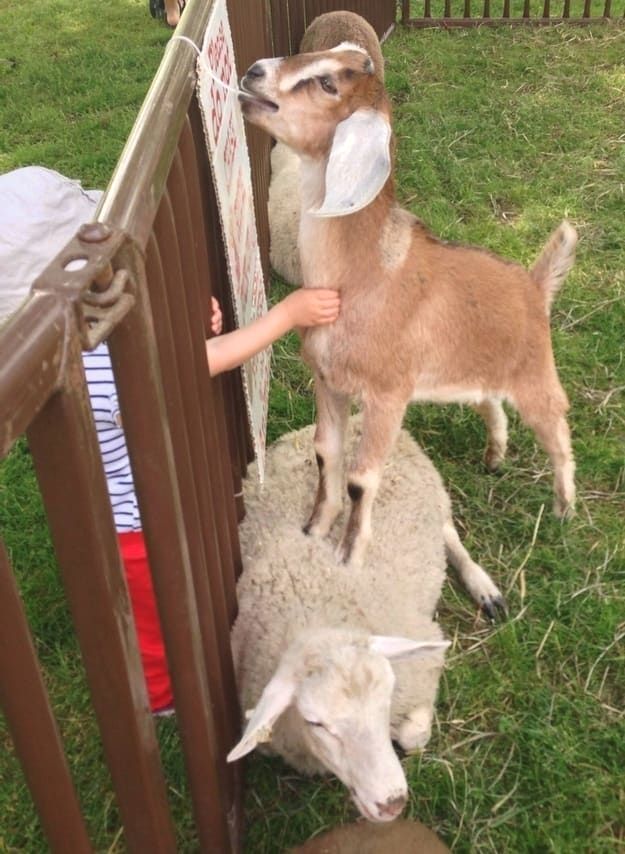 They were floppy, weak, and had no sucking ability.
They were floppy, weak, and had no sucking ability.
This was one of those times that I had to pull out my book, Goat Health Care, and relearn how to use a stomach tube for feeding baby goats warm colostrum. If they were mature enough, it would be the only chance they had to survive. Anyone caring for goats is wise to include a tube and syringe designed for such feeding in their birth kit to give weak or sick kids a fighting chance.
You can purchase a flexible rubber feeding tube, along with a 60 ml syringe and an irrigation tip, for $5 or less at most veterinary supply stores or from a veterinarian. The tube has a tapered end, which attaches to the syringe. The cost is minimal, compared to paying a veterinarian, and while tube feeding baby goats seems scary, it really isn’t that hard.
The biggest fear that people have about tube feeding is that they will accidentally get liquid into the goat’s lungs. Although you need to be careful, it is much easier to get the tube into the stomach than into the lungs, and there are several ways to check to make sure it isn’t in the lungs before you add milk or colostrum.
To determine how far to insert the tube, measure from the kid’s nose to the center of the ear base. Then measure from the ear to the chest floor and mark the feeding tube with the sum of those two measurements. That mark is how far the tube must be inserted into the kid’s mouth. (If the tube cannot be inserted that far, it is the first sign that it is in the windpipe [trachea] rather than the stomach.)
Although tube feeding baby goats can be done by one person, having a second person to hold the kid is better. Some kids (like Buttercup’s kids) are too weak to even fight back, but others may have more spirit but yet be unable to suck.
To tube feed, hold (or have someone hold) the kid on your lap and tilt its head back slightly so the tube has a straighter path to follow. Open the kid’s mouth a little by pressing on one side of the jaw with your fingers. Take the softened tube and slowly slide it down the kid’s throat, small end first. If it does not go as far as the mark, slowly pull it out and start over. (I have never had this happen.)
(I have never had this happen.)
If the kid was crying before the tube was inserted and suddenly stops during the process, slowly pull the tube out and start again.
Putting one hand on the front of the kid’s throat will help you feel when the tube enters the esophagus. When the mark on the tube is at the opening of the kid’s mouth, you are there.
There are several methods for checking to ensure that the tube is in the right place. The first is smelling the end of the tube for a milk smell coming from the stomach. I didn’t use this method in the case of Buttercup’s kids because they were just born and had no milk in their stomachs.
The second method is to place the end of the tube into a cup of water. If bubbles come out, the tube is in the lungs. I have done this, but it can be unwieldy, especially if you are working alone.
The third method is to blow gently into the tube to see whether the lungs inflate. I have not tried this method, in part because I have concerns about blowing too hard into fragile newborn lungs.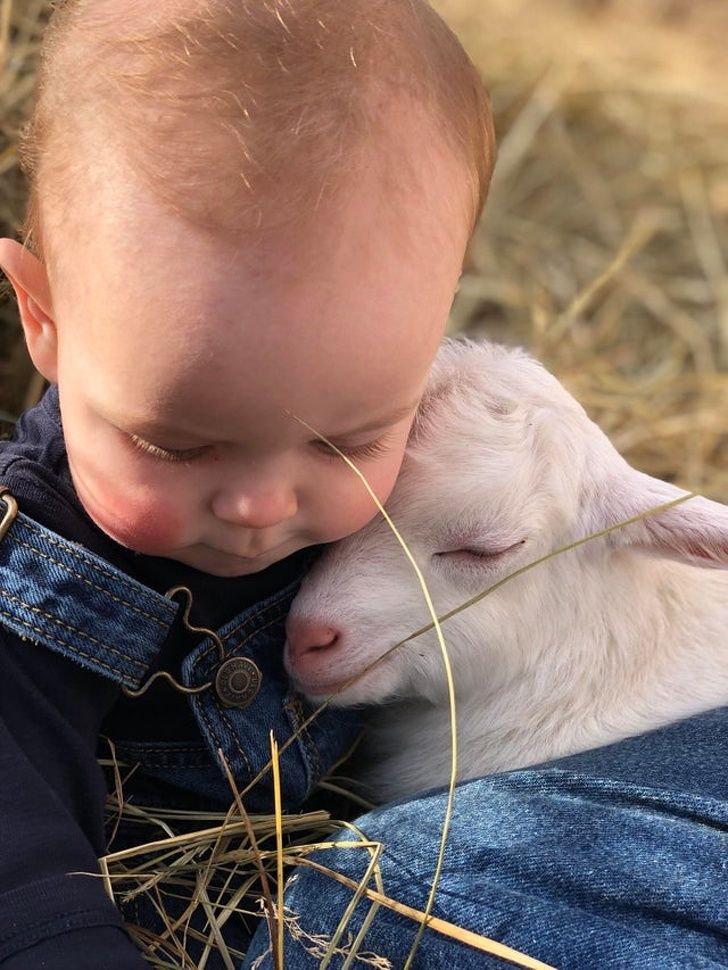
I chose the fourth method: Listen at the end of the tube for the little crackles that are the sounds of breath. I heard no sounds so I was ready for the feeding.
After determining that the tube is correctly placed, you are ready to feed. Attach the 60 ml syringe to the feeding tube. Use your 6 ml syringe filled with warm water to add water to the syringe to ensure that it goes down properly and is not twisted. If everything seems fine, pour the colostrum or milk into the tube, while holding it up higher than the kid. (The plunger is not needed for this procedure because gravity will pull the milk down.)
After the milk or colostrum is gone, add another 6ml more water to rinse the syringe. This step is not essential, but can help to prevent milk or colostrum from going into the lungs while removing the tube, if some is left in the syringe or tube. Then withdraw the tube slowly, but in one smooth motion.
In some cases, you will see a striking difference in the kid. It may stand up within minutes and even show interest in nursing shortly afterward. In others, you may need to do several such feedings before the kid develops the necessary strength.
It may stand up within minutes and even show interest in nursing shortly afterward. In others, you may need to do several such feedings before the kid develops the necessary strength.
In the case of Buttercup’s kids, their prematurity made life impossible and the tube feeding had no effect. Their lungs were not developed enough for them to survive without more treatment than an average goatkeeper like me can provide.
I try to take something good from every experience with my goats. In this case I learned that tube feeding baby goats is something I could do without hurting the kid, and I was reminded that on the homestead, you are never far from new life or death.
Tube Feeding Supplies:
• Feeding tube, warmed with hot water to soften
• 60 ml syringe with irrigation tip
• Colostrum or milk
• Warm water
• 6 ml syringe
Have you tried tube feeding baby goats? We would love to hear your stories.
Cheryl K.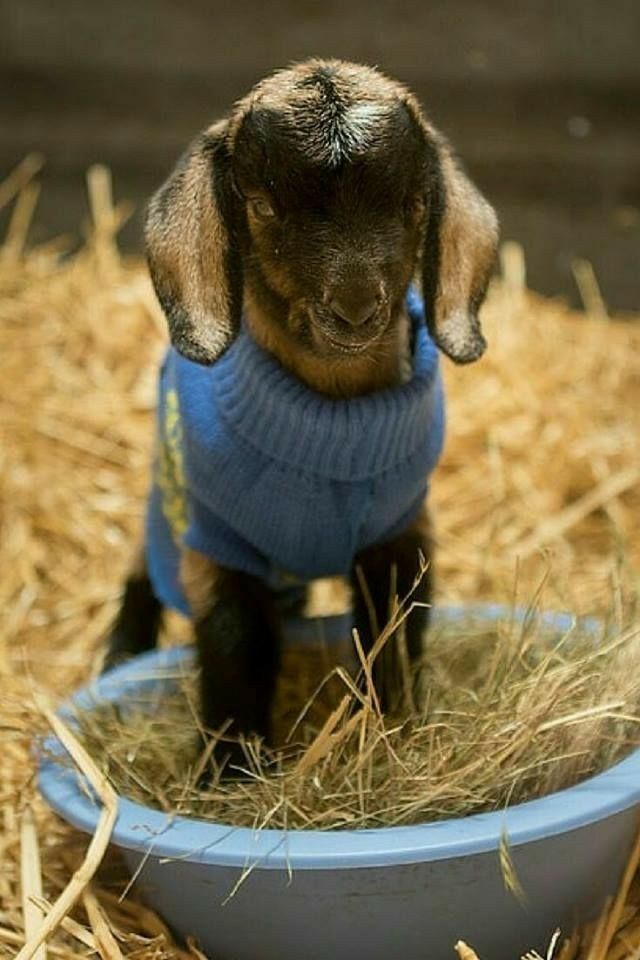 Smith is a freelance writer and editor. She has been raising miniature dairy goats in the coast range of Oregon since 1998. She is the author is Goat Health Care and Raising Goats or Dummies.
Smith is a freelance writer and editor. She has been raising miniature dairy goats in the coast range of Oregon since 1998. She is the author is Goat Health Care and Raising Goats or Dummies.
Published in the Nov/Dec 2016 issue of Countryside & Small Stock Journal.
Program for rearing kids on goat farms and complexes.
Contents
How to raise a healthy and productive kid? What are the main mistakes made when raising goats on farms? These and other questions will be considered in this article.
Step-by-step veterinary program for growing kids on goat farms and complexes.
Health care for a goat starts 2 weeks before it is born. As farmers, we must strive to protect him as much as possible from the impact of external negative factors from his very birth. Therefore, it is important to fully participate in the preparation and maintenance of lambing.
Step 1.
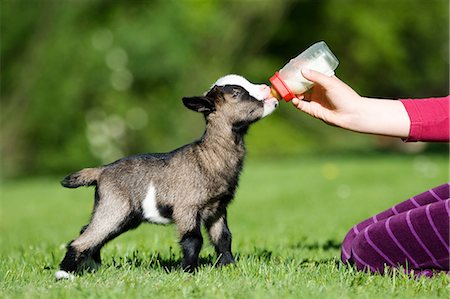 Formation of the immunity of kids in the womb.
Formation of the immunity of kids in the womb. 2 weeks before lambing, adult female goats should be vaccinated against clostridium in order to develop 2 weeks of colostral immunity in the goatling against clostridium.
Lambing - as the most important stage in the formation of the health of young animals.
Step 2. Lambing - as the most important stage in the formation of the health of young animals.
It is necessary to closely monitor the lambing in the herd, timely conduct obstetric care and take the newborn kid from the goat as early as possible. It is best if you have time to wean before the goat touches the litter. This will protect the kid from the pathogenic microflora of the litter and the transmission of infections from the mother at the time of his licking.
First steps after lambing.
After weaning, clean the nose and mouth of the newborn kid from mucus and immediately move it to a separate room (nursery) intended for growing kids.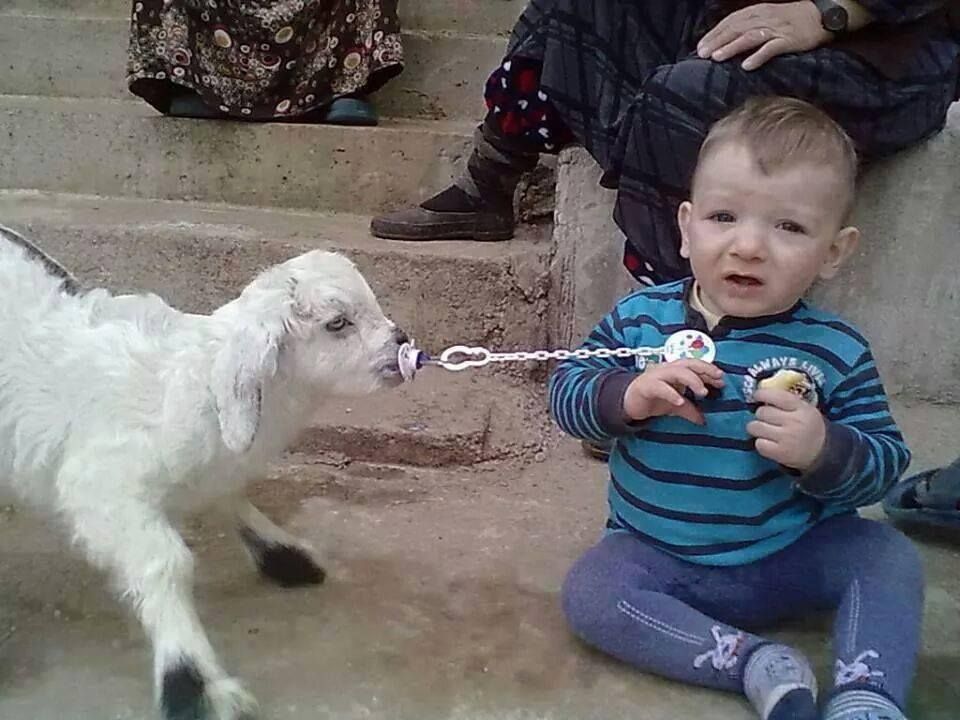 The main feature of the nursery is that the room should have a separate (from the main goat house) ventilation system, temperature and humidity conditions.
The main feature of the nursery is that the room should have a separate (from the main goat house) ventilation system, temperature and humidity conditions.
Weaning and transportation of kids to the nursery
Do you have questions about feeding goats?
Need advice on formulating or optimizing your diet?
Do you need raw milk?
Contact our support team and get advice!
Step 3. The first hours after lambing.
As soon as the kid was brought to the nursery, he is immediately transferred to an individual space. To do this, you can use: plastic boxes or cardboard boxes, of any shape.
Nursery for kids
At the time of transplantation, the umbilical cord is treated with iodine solution (brilliant green) or something - spray, put a tag.
The cardboard box or box itself is placed under an infrared lamp for the final drying of the kid and improving blood circulation in the surface layers of the skin.
Box for kids with infrared heater
Kids stay in the day box until the umbilical cord rudiment dries up to 24 hours.
After the first hours of drying, during the first 1.5 hours, the kid needs to drink the first portion of colostrum 150/200 grams. Colostrum is fed to each kid either through an individual bottle with a nipple or through a probe (at industrial complexes), during the day, colostrum is fed 4 times to each kid.
Why is it important to give colostrum to a newborn kid? Which colostrum to choose? How to set up a colostrum bank?
Step 4. Feeding the kids.
On the second day, strong and active kids are transferred to pens for feeding them up to 60 days of age.
Prior to the start of watering, it is necessary to select milk replacer (whole milk substitute). Milk replacer - there are different types, but as a rule, the main difference is what whey proteins are used in it - whey proteins from goat's milk or whey proteins from cow's milk.

We recommend the following scheme for feeding goats:
| Goat age | Mixture dose per drink ml. | |
| 1 week | 6 | 300 |
| 2-3 weeks | 5 | 300 | 4-6 weeks | 500 | 3 | 600 |
| 9 Week | 2 | 600 |
| 10 Week | 1 | 600 |
depending on the size of the households and the number of youth)
Hand watering of kids through teats.
We launch a group of kids into the attachment zone, distribute them along the nipples.
- Watering through the bucket and nipple system.
 To do this, you need to create the following design:
To do this, you need to create the following design:
find a plastic food bucket with a lid;
cut a hole in the center of the bucket lid for a 15 inch tube, as shown in the photo below.
Feeding goats with a bucket and nipple system.
Pass the hoses from the other side of the bucket through the tube and connect them to the teats mounted on the wall of the pen.
Self-made system for feeding goats.
This method facilitates manual labor, because at the time of feeding we only need to pour the mixture into the bucket, the total volume of which we expect per group. The multiplicity of drinking is similar to method 1.
An additional plus is that this method allows us to drink water as well.
- Automatic feeding of kids.
Such a watering system allows the maximum intensive development of kids and frees up time.
Automatic feeding station for goats with whole milk substitute.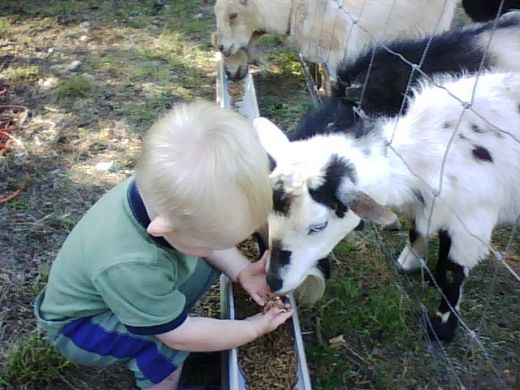
The task at the beginning of watering is simply to control the amount of powder poured into the bunker of the station, and at the end of watering, turn it on and off according to the weaning pattern in order to avoid overfeeding the goats.
When the kids are transferred to the watering stations, they are taught to drink by poking each kid to the nipple and checking that he starts to suckle.
Teaching goats to an automated feeding station with a whole milk substitute.
Are you preparing to implement the investment project for the new construction or reconstruction of a goat farm?
Do you want to use proven technological and technical solutions in goat breeding?
Contact us , and you will receive:
advanced technological and technical solutions proven on existing farms;
complex zootechnical and veterinary escort your goat farm;
the opportunity to build the farm of your dreams through a preferential investment loan at a rate of less than 5%.
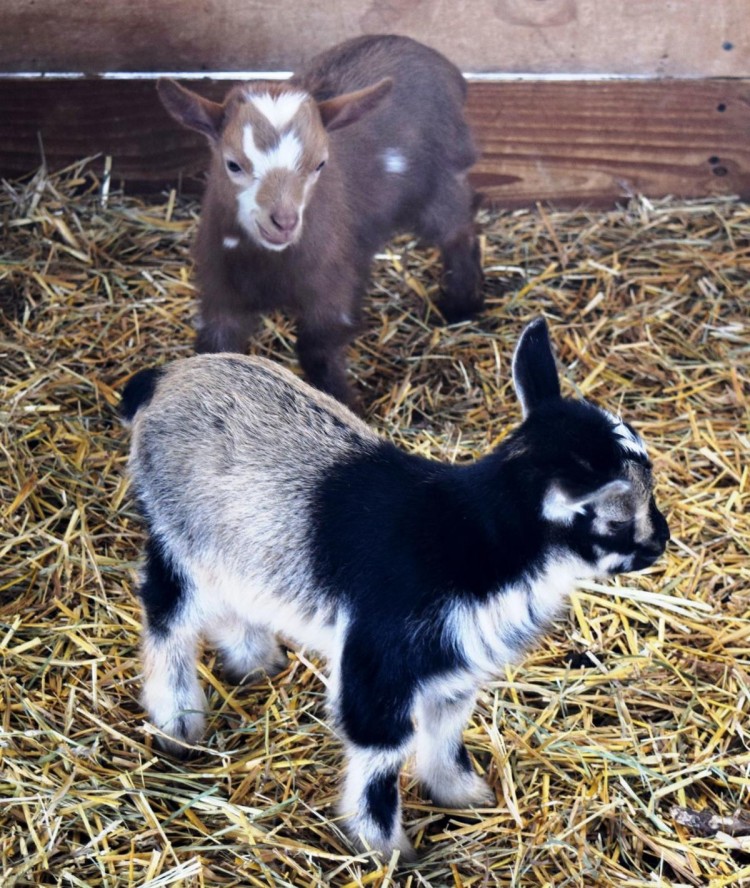
Reference.
There are 3 main manufacturers of baby feeding stations: Foster Technik, Urban and Lac-tek.
On our farm, we study the functionality, design features, ease of use, payback period and economic feasibility for goat farms with livestock: 50, 150, 300, 600, 1500, 2500, 4000 heads.
For this type of equipment, we have carried out a field test of the Foster Technik watering station. We will prepare a description of the station and calculations for its economic feasibility later, but if necessary, you can ask us questions right now.
Step 5. Control parameters for rearing young animals.
A newborn goat must weigh at least 3.5 kg, less weight increases the chance of death.
With proper rearing of a kid, the average weight gain is 200-225 g/day.
After a week of accustoming to drinking from the second week, the goats are fed compound feed (starter) 30 grams each and roughage hay (good hay is better than alfalfa) should be tasty. Starter feed should be based on soy protein, because only this protein is absorbed in the small intestine.
Starter feed should be based on soy protein, because only this protein is absorbed in the small intestine.
If you liked the article:
Share with your friends by clicking on the social network buttons.
Write a comment (at the bottom of the page).
Subscribe to updates, there will be a lot of interesting and useful things!
Have a nice day!
Primary treatment of newborn kids and rules for their watering
Goat breeder Direct.Farm shared the program of growing kids on goat farms. In this video, you will learn how to organize the primary treatment of newborn kids, what manipulations to do with a goat immediately after birth, how to quickly and cheaply build rooms for day old kids, as well as an additional bonus - Efficient feeding plan for kids .
Immediately after giving birth, the goat is separated from its mother.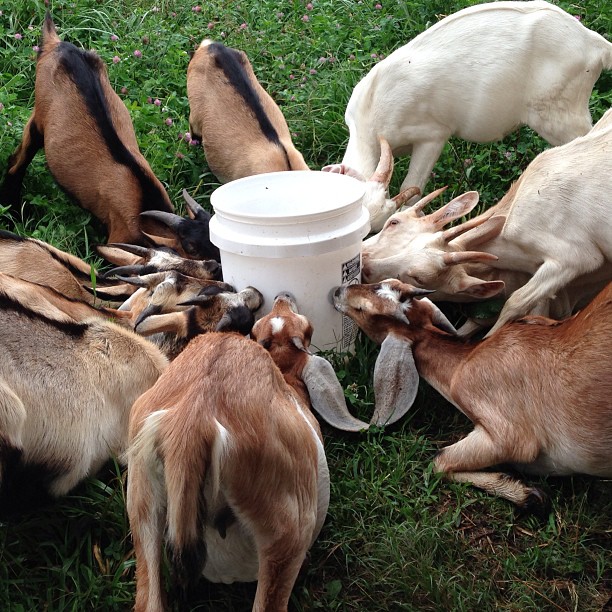 On breeding farms, in order to avoid confusion, goats are immediately entered into the database. The scanner reads the ear number of the mother and the future ear number of the kid. It is dangerous to pierce the ear in the area of deep litter immediately after birth. Tags in a bag are hung around the kid's neck on a mounting collar. The ears and the tag are disinfected with iodine and punched already in a special room for day old young animals.
On breeding farms, in order to avoid confusion, goats are immediately entered into the database. The scanner reads the ear number of the mother and the future ear number of the kid. It is dangerous to pierce the ear in the area of deep litter immediately after birth. Tags in a bag are hung around the kid's neck on a mounting collar. The ears and the tag are disinfected with iodine and punched already in a special room for day old young animals.
Immediately after giving birth, the goat should be given a warm drink, preferably with vitamins. To do this, dissolve an effervescent vitamin tablet in a bucket. If the goat does not drink, you need to dip it with the tip of the muzzle into the water. Licking her lips, she will realize that the water is tasty and will start drinking. A goat after a difficult birth and obstetrics should always have fresh, clean water nearby. Even if there are drinkers in the corral, a bucket of water is placed next to it. This is necessary so that the goat recovers more easily after the use of strong antibiotics. These goats are milked separately by a mobile milking machine.
These goats are milked separately by a mobile milking machine.
Room for day old kids (nurseries), with seasonal insemination, 2-3 months a year are required. It makes sense to make a temporary room right in the farm building from improvised materials. Straw bales, banners, boards covered with foil, sandwich panels, etc. are suitable. Inside should be warm, without drafts.
Kids can be placed in individual or group boxes. Before taking the kids, the boxes are washed and disinfected. The bottom of the box is sprinkled with disinfectant powder. Hygroscopic small sawdust is poured on it. And so that the kids do not prick with sawdust, a layer of soft straw is placed on top.
Wet kids are dried with a hygroscopic disinfectant powder such as Mistral. The boxes are filled according to the "empty-busy" principle.
In the first hours of life, the kid needs to drink colostrum. To obtain a wider range of antibodies, it is better to drink colostrum from local pastured cows.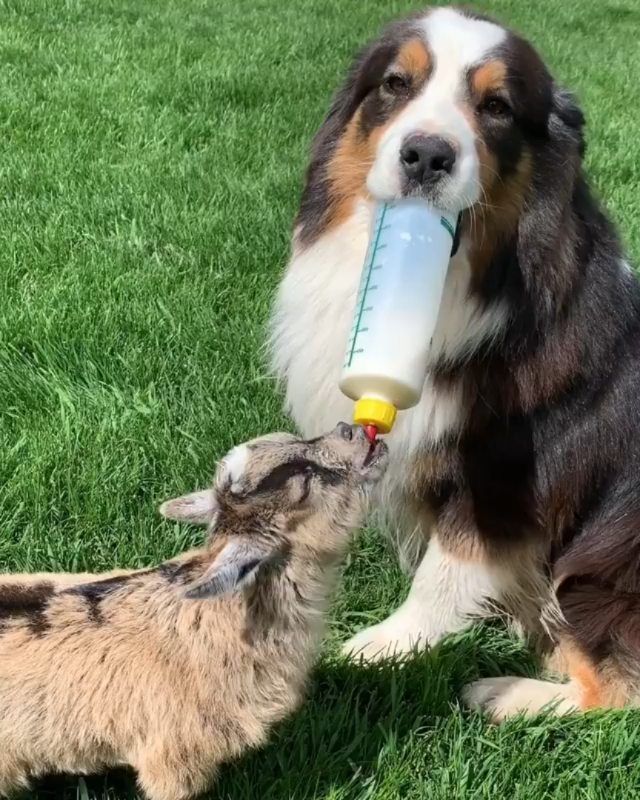 Colostrum is frozen in buckets and bags and stored in a freezer. As needed, colostrum is thawed in a water bath. The necessary tools, tags, syringes, medicines should always be at hand. The first portion of colostrum can be fed from a bottle or through a tube.
Colostrum is frozen in buckets and bags and stored in a freezer. As needed, colostrum is thawed in a water bath. The necessary tools, tags, syringes, medicines should always be at hand. The first portion of colostrum can be fed from a bottle or through a tube.
Safe from the bottle. The kid is held by the base of the neck behind the ears, slightly raising his head. It is correct to hold the bottle from below by the neck at the base of the nipple.
It is recommended to keep a record of watering - the name of the worker and the last feeding time are written on the board. Goats are marked with marks corresponding to the number of drinks and the amount of colostrum drunk. For example, after the first drinking, the mark is placed on the muzzle, the second - on the neck, the third - on the back, the fourth - near the tail. The kid drank 50 g - one blue strip, 100 g - one red. If the goat drank 150 g of colostrum for the first time, one red and one blue stripe is drawn on the muzzle.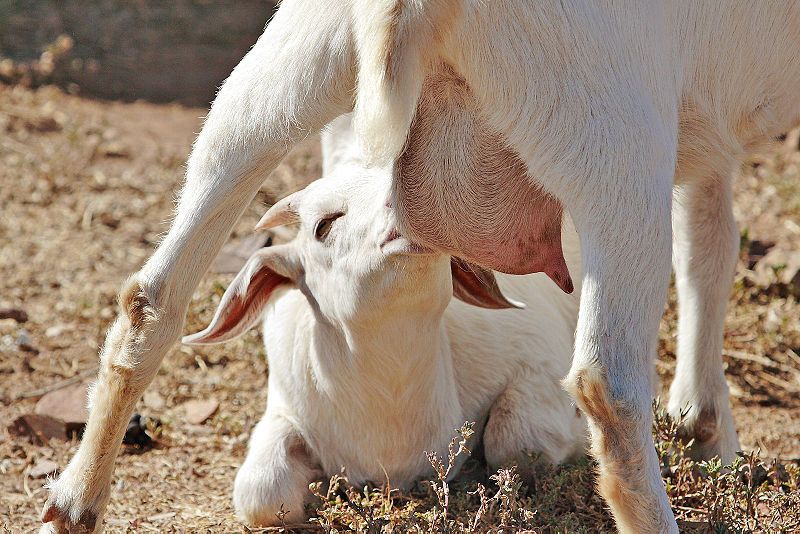
Drink colostrum quickly through a tube, but it is easy to confuse the windpipe with the esophagus and pour colostrum into the lungs. Even experienced workers make mistakes, and according to statistics, one out of 100 kids dies from food poured into the lungs.
As soon as the kid has drunk the prescribed norm of colostrum, he is immediately accustomed to feeding through an automatic station. During this period, the use of bottles is prohibited. The worker every 2 hours feeds each goat in the group only through the station.
After the kid learns to eat on his own through the station, he is transferred to the next group. The kids in these groups are also checked several times a day and they make sure that everyone eats plenty. The goat should have a full belly at all times. Kids with an empty abdomen are marked as requiring special attention. Such babies need to be brought to the nipple from the automatic feeding station and make sure that they eat.
After two months, the kids are taken off the water and transferred to the group “young animals up to 7 months”.

